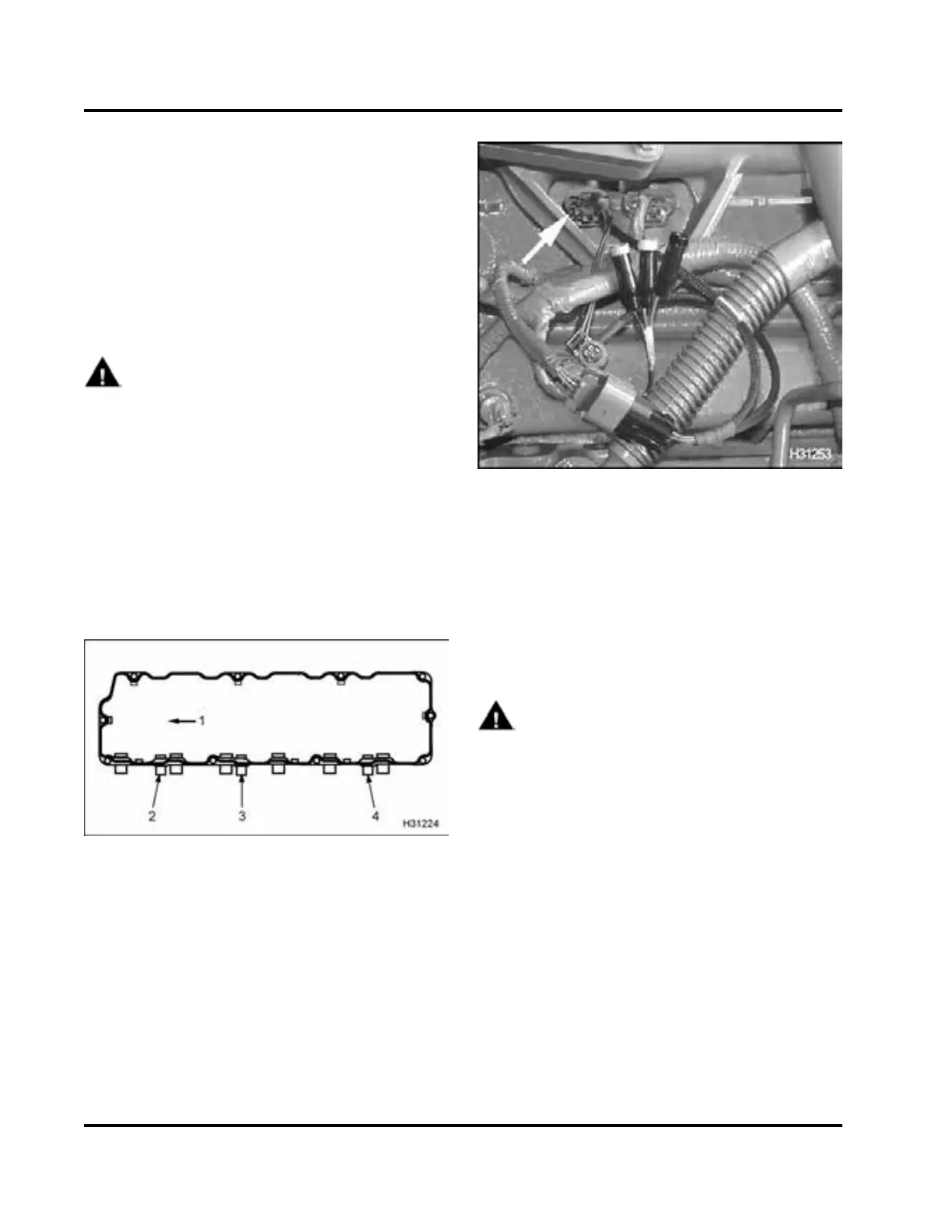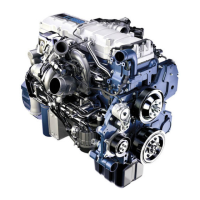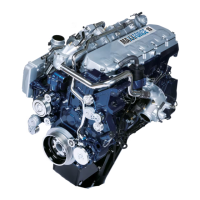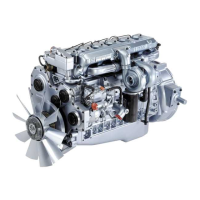242 6 PERFORMANCE DIAGNOSTICS
Monitoring BCP using VC Gasket Breakout
Harness
NOTE: Only do this procedure if d irected here from
“Monitoring ICP using Gasket Breakout Harness.”
This is an alternate method when an EST is not
available.
Tools
• VC Gasket Breakout Ha rness
•DMM
WARNING: To avoid serious personal injury,
possible death or damage to the engine or vehicle
– comply with the following:
When running the engine in the service bay, make
sure the parking brake is set, the transmission is
in neutral, and the wheels are blo cked.
NOTE: BCP should be zero, when engine brake is
inactive. However, BCP valu es may fluctuate as much
as 345 kPa (50 psi). Electromagnetic interference
(EMI)orgroundshiftcancauseaninsignifica
nt
voltage shift that does not indicate a probl
em. This
should be equal to KOEO BCP s ignal voltage.
Figure 313 Valve cover gasket
1. Frontofengine
2. Pass-th rough connector for BCP sensor
3. Pass-through connector for brake shut-off valve
4. Pass-through connector for ICP sensor
1. Disconnect engine harness connector from the
pass-through connector for the BCP sensor and
do steps 2 to 6.
Figure 314 VC Gasket Breakout Harness to
pass-through connector for BCP sensor
2. Connect VC Gasket Breakout Harness to the
pass-through connector for the BCP sensor and
engine harness.
3. Use DMM to me asure BCP.
• Connect POS to green (signal circuit) and
NEG to black (g ro und circuit).
WARNING: To avoid serious personal injury,
possible death, or damage to the engine or vehicle
– comply with the following:
When routing DMM leads, do not crimp the leads,
run the leads too close to moving parts, or let the
leads touch hot engine surfaces.
4. TurntheignitionswitchtoON.(Donotstart
engine.) Measure KOEO BCP signal voltage and
record on Diagnostic Form.
• If BCP signal voltage is above KOEO
specification, see “BCP Sensor Operational
Diagnostics” in Section 7.
• If BCP signal voltage is in KOEO
specification, continue to step 5.
EGES-270-1
Read all safety instructions in the "Safety Information" section of this manual before doing any proced ures.
Follow all warnings, cautions, and notes.
©August 2008 Navistar, Inc.

